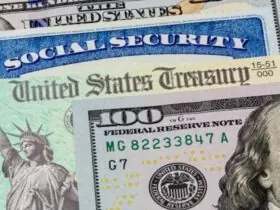The Biden Administration’s student loan forgiveness initiative is a bold step toward addressing the growing student debt crisis in America. By offering financial relief to millions of borrowers, the plan aims to reduce the burden of student loans, but it also raises important questions about how it will be funded and its long-term economic effects. Below, we break down the key aspects of the plan, the targeted beneficiaries, and its potential consequences for taxpayers and the national deficit.
Biden can move forward with student loan forgiveness. Here’s what happens next: https://t.co/9ItYDKF7xd
— TIME (@TIME) October 4, 2024
What Is the Student Loan Forgiveness Plan?
This Article Includes
The Biden Administration’s student loan forgiveness plan is designed to provide up to $20,000 in loan forgiveness for eligible borrowers. This relief is particularly aimed at individuals in public service roles, those with longstanding student debt, and those experiencing financial hardship. By forgiving portions of loans and eliminating accrued interest for some, the plan offers a comprehensive approach to easing the financial strain of borrowers.
The goal of the plan is to promote economic mobility by helping borrowers who feel trapped under the weight of student debt. Many borrowers have struggled to make substantial progress on paying off their loans, often finding themselves paying off interest without reducing the principal balance. This plan addresses that issue by offering partial or full debt forgiveness.
Who Benefits from the Plan?
The student loan forgiveness plan targets specific groups of borrowers, aiming to provide relief to those who are most in need. These groups include:
- Public Service Workers: Individuals employed in government or non-profit roles may qualify for relief, as the plan seeks to incentivize careers in public service.
- Longstanding Debtors: Borrowers who have carried student loan debt for extended periods of time, without seeing significant reductions in their balances, are eligible for forgiveness.
- Financially Struggling Borrowers: The plan prioritizes individuals experiencing financial hardship, including those with low incomes or other challenges that make repaying their loans particularly difficult.
This targeted approach ensures that relief is directed where it is most needed, benefiting individuals who are most vulnerable to the long-term impacts of student debt.
The Financial Mechanics: Where Does the Money Come From?
Though the idea of student loan forgiveness is appealing, it’s essential to understand how the plan will be funded. Contrary to popular belief, the funds used to forgive loans do not come from an unlimited source—they are ultimately drawn from taxpayer dollars.
When the government forgives loans, it forgoes the revenue that would have been collected from borrowers repaying their loans. This results in a substantial loss of income for the federal government, which must be offset in some way.
The Penn Wharton Budget Model estimates that the cost of the Biden Administration’s loan forgiveness plans could reach around $559 billion over the next ten years. Without additional revenue sources to compensate for this cost, the government absorbs the financial burden, contributing to an increase in the national deficit.
The Impact on Taxpayers and the National Deficit
The key point to understand is that taxpayers will bear the financial responsibility for this loan forgiveness. The government, in essence, covers the cost of loan forgiveness by borrowing more money, thus expanding the national debt. The Congressional Budget Office (CBO) projects that the student loan forgiveness plan could increase the national deficit by up to $400 billion.
As the national deficit grows, the U.S. government will face more financial obligations to its creditors. This, in turn, could have broader economic implications, such as higher interest rates or reduced government spending in other areas, as the government must find ways to service its increasing debt.
Economic Benefits vs. Long-Term Costs
While the student loan forgiveness plan has the potential to improve the financial outlook for millions of Americans, especially those burdened by high debt levels, the costs associated with the plan are not negligible. Over time, the impact of the forgiveness on the national deficit could create fiscal challenges for the U.S. economy.
The plan’s immediate benefits are clear: it provides relief to borrowers, reduces financial strain, and encourages economic mobility. However, its long-term success depends on the government’s ability to manage the increasing debt and potentially find ways to offset the costs of the program, such as through deficit reduction or increased revenues.
Conclusion: A Complex Trade-Off
The Biden Administration’s student loan forgiveness plan is an ambitious effort to tackle the student debt crisis in the United States. By offering up to $20,000 in loan forgiveness, it targets individuals in public service, those with longstanding debt, and those in financial hardship. However, it’s important to recognize that this relief comes at a significant financial cost, which will ultimately be borne by taxpayers. As the national deficit grows and the government increases its debt to fund the program, the long-term consequences for the U.S. economy remain uncertain.
Ultimately, while student loan forgiveness has the potential to improve economic conditions for many Americans, it is a policy that requires careful consideration of both its immediate benefits and its broader fiscal impacts.







Leave a Reply